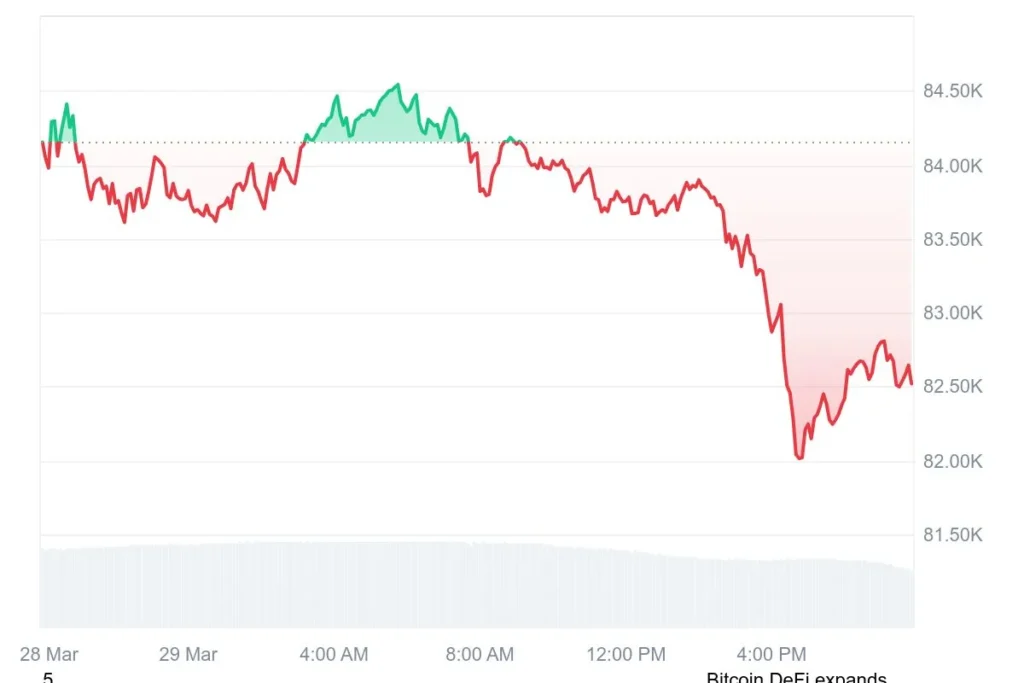Bitcoin and leading altcoins lost significant value during the final period of the week because the crypto fear and greed index stayed inside the fear region.
Bitcoin reached $89,000 before it plummeted to near $82,000 during morning hours on Saturday. See below.

Digital coins underwent a market value decline, which resulted in $2.73 trillion. Bitcoin, alongside other altcoins, will likely face two important triggering events during the upcoming week.

Trump’s reciprocal tariffs
The main factor that will propel cryptocurrency markets and stock prices next week comes from President Donald Trump’s planned “Liberation Day,” during which he will initiate reciprocal trade tariffs against the U.S.’s major trade partners.
The proposed trade penalties aim to combat what Trump identifies as illegal restrictions on American merchandise and trade obstacles.
EU authorities prepare concessions to counter US tariffs, which China plans to answer through specific retaliatory actions.
Professional economists warn that such tariffs will increase costs for American producers and disrupt their foreign operations. Some experts have stated that the United States will experience a greater possibility of entering a recession when consumer spending, combined with business investments, decreases.
The March Ag Economists’ Monthly Monitor reveals that 62 percent of economists predict the U.S. general economy will experience recession in 2025.
Bitcoin, along with altcoins, will register responses due to these newly introduced tariffs after Tuesday. Trump’s forthcoming tariff announcement will probably cause the values of these assets to decrease further.
These assets might recover due to market players integrating the existing tariffs into their pricing. Additional factors may induce price growth if particular countries negotiate with the United States.
US nonfarm payrolls data
Nonfarm payroll data from the US will serve as a primary market driver for Bitcoin along with alternative cryptocurrency price fluctuations on the upcoming Friday.
The job numbers released this week are expected to reveal an approved number of 128,000 according to the economists who participated in the Reuters survey. The recent job figures stand at 151,000 positions below the initial 128,000 prediction for March. The labor market indicators predict an increase in unemployment of up to 4.2%.
Job data has historically caused both stock markets and cryptocurrencies to react due to their effects on Federal Reserve decisions. Federal Reserve officials maintain their authority to keep inflation steady and sustain low employment numbers.
The economic labor market data arrived at a time when Wall Street analysts maintained different perspectives about Federal Reserve actions throughout this year. The Federal Reserve continues to sustain its interest rates throughout 2018 because of grave inflation difficulties, while economic experts disagree about when a rate cut will occur due to President Trump’s trade barrier policy.









